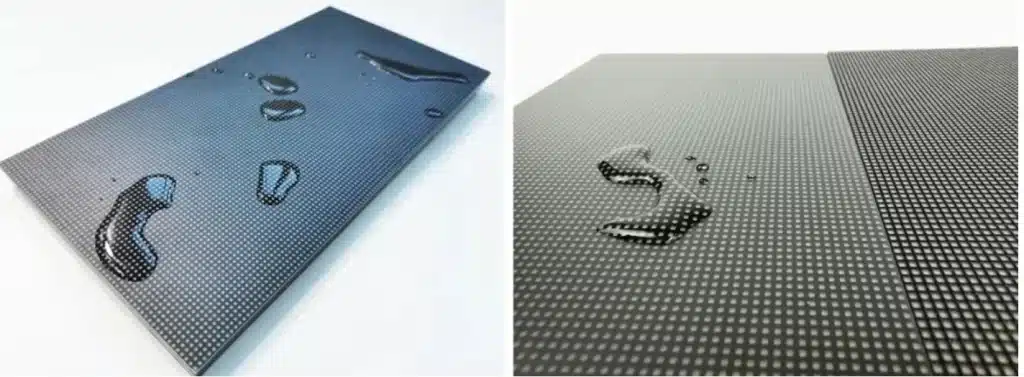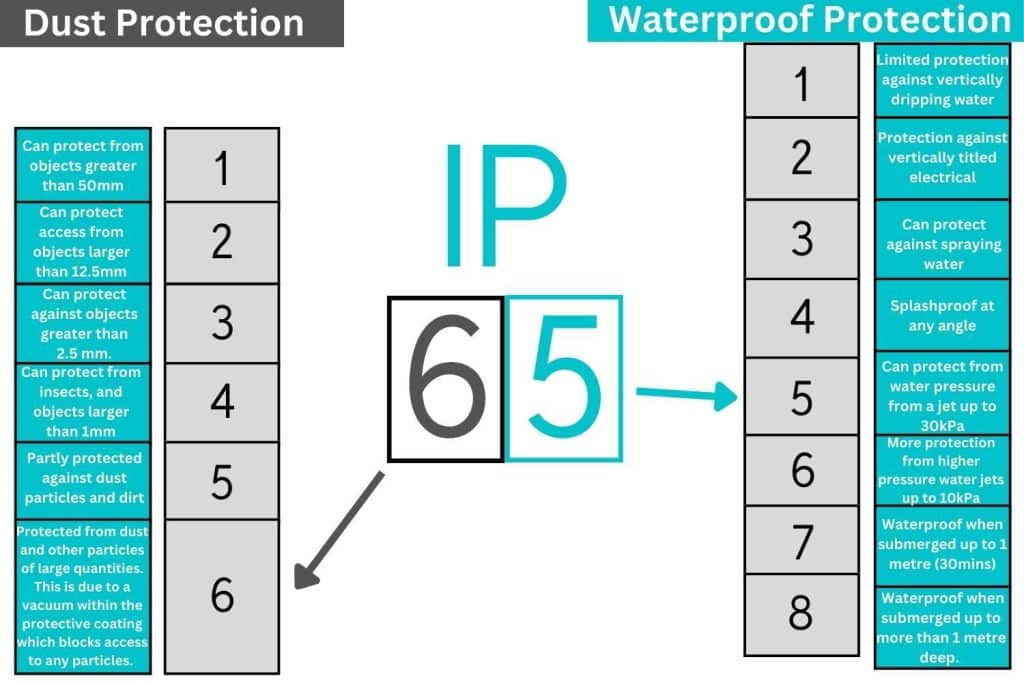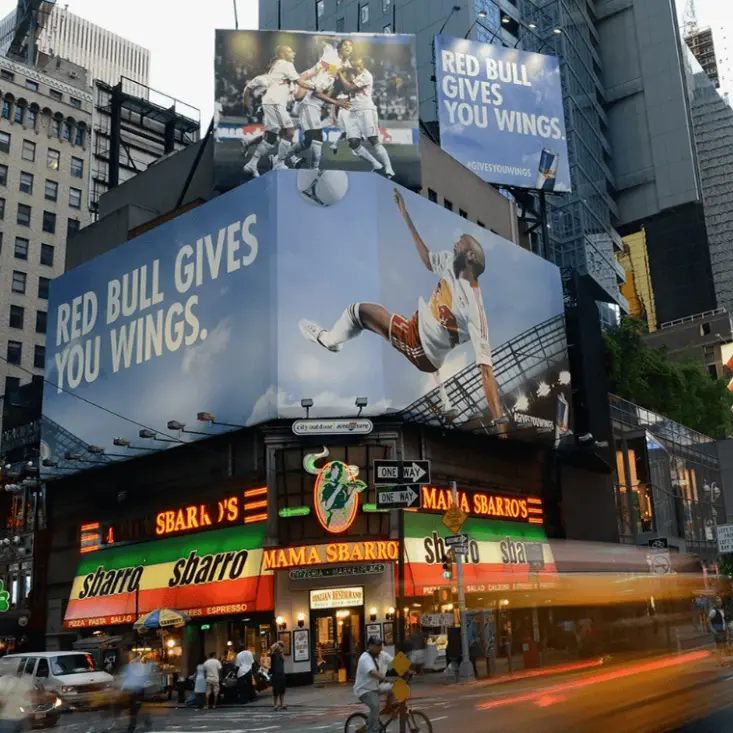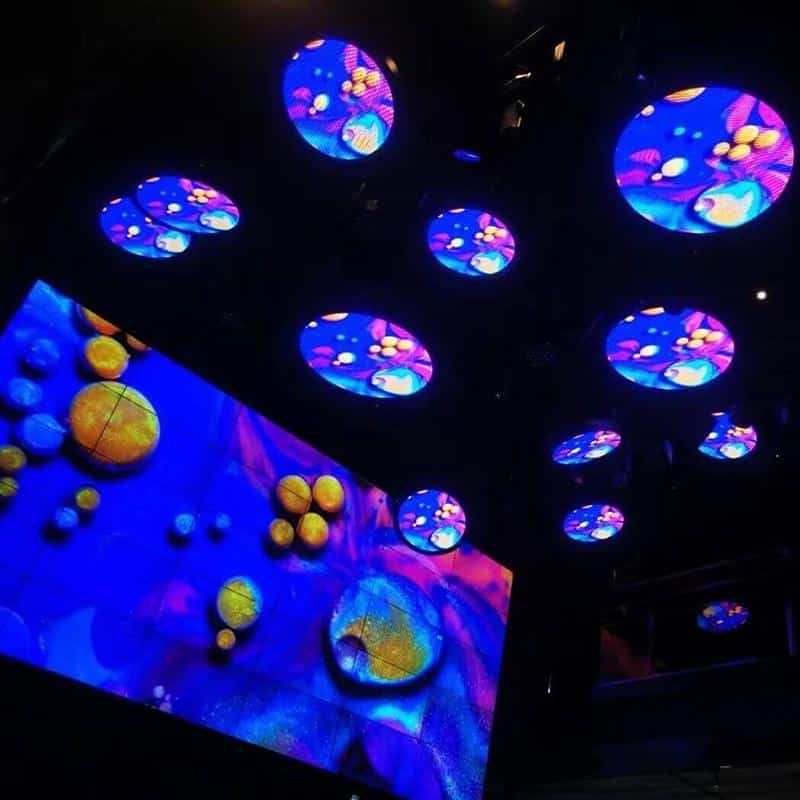When planning to purchase an LED display for outdoor projects, the waterproof rating is a crucial factor to consider. Waterproof LED displays protect electronic components from damage caused by rainwater. However, do you know about the waterproof ratings of LED displays? What do IP65, IP67, and IP68 mean, and how do they differ?
This article provides a comprehensive guide to the waterproofing of LED displays, helping you better understand their waterproof ratings and protective performance.
1. What is a Waterproof LED Screen?
A waterproof LED screen refers to an outdoor LED display that has been equipped with appropriate waterproof measures and has a high waterproof rating. Compared to indoor displays, semi-outdoor or outdoor displays are exposed to outdoor environments and may be affected by rain and other weather conditions. Therefore, they must have a certain level of waterproof capability and meet corresponding waterproof standards to ensure the normal operation of electronic devices.

Indoor displays do not require waterproof ratings, as their protection level is mostly IP54, providing some dust and moisture resistance. Outdoor LED billboards, on the other hand, have protection levels such as IP65, IP66, IP67, etc. What are the differences between these IP levels? What do the numbers represent? Let’s find out.
2. What is an LED IP Rating?
IP (Ingress Protection) ratings, established by the International Electrotechnical Commission (IEC), indicate the level of protection provided by electronic devices against dust and moisture.
LED Display Protection Levels: Generally denoted as IPXY, where X represents the dust protection level, and Y represents the water protection level. The higher the number, the stronger the protection. The maximum levels are 6 for dust and 8 for water.
IP Rating Breakdown
| Parameter | Dust Protection (X) | Water Protection (Y) |
|---|---|---|
| 0 | No protection | No water protection |
| 1 | Prevents large objects | Prevents dripping water |
| 2 | Prevents medium objects | Prevents water when tilted |
| 3 | Prevents small objects | Prevents sprayed water |
| 4 | Prevents tiny objects | Prevents splashed water |
| 5 | Dust-resistant | Prevents low-pressure jets |
| 6 | Dust-proof | Prevents high-pressure jets |
| 7 | Waterproof up to 1m | Prevents immersion for 30min |
| 8 | Waterproof beyond 1m | Prevents continuous immersion |

Outdoor LED displays typically have higher waterproof ratings than indoor ones due to their exposure to rain. For instance, an IP65-rated LED display is suitable for most outdoor scenarios, offering protection against dust and sprayed water. If you’re in an area with prolonged rainy seasons, higher ratings like IP67 or IP68 would be more suitable.
3. Why Care About IP Ratings?
A higher IP rating ensures longer lifespan for the display by protecting internal components from water damage. High-quality LED materials, resistance to external factors, and proper maintenance are all crucial for longevity. Waterproof displays effectively shield internal electronics from rain, enhancing durability.
4. How to Obtain a Waterproof LED Screen?
Several methods can be employed to ensure outdoor LED displays are waterproof:
Enclosed Housing: Outdoor displays often come with sealed enclosures to protect against moisture.
Sealant: Waterproof adhesive is used to seal joints, preventing water ingress.
Waterproof Connectors: These ensure that power and signal connections remain intact despite moisture.
Waterproof Materials: Components and circuit boards made from waterproof materials enhance resistance to water damage.
5. Recommended Waterproof LED Screens
Outdoor Full-Color LED Displays
These use waterproof modules with anti-corrosion coatings and undergo rigorous waterproof testing before release.
Pole-Mounted LED Screens
Designed for outdoor use, these screens have superior waterproof capabilities, with sealed enclosures and independent control units.
GOB LED Displays
These feature advanced transparent materials for PCB and LED package, offering comprehensive protection against water, dust, and other environmental factors.

Flexible Outdoor LED Modules
These are designed for creative outdoor applications, with IP65-rated waterproofing and special waterproof designs at connection points.
6. Waterproof Testing and Maintenance
Cailiang LED conducts thorough waterproof tests on their displays, including water spraying and immersion tests, to ensure they meet specified standards. Regular maintenance is essential to ensure longevity
Cleaning: Regularly clean the display surface to prevent water accumulation and dirt buildup.
Waterproof Check: Inspect seals, connectors, and cables for any damage or leaks.
Ventilation: Ensure proper airflow to prevent moisture buildup inside the display.
Power and Connection Checks: Regularly inspect power lines and connectors for damage, especially after exposure to rain.
Preventive Maintenance: Follow manufacturer guidelines for routine maintenance, including component replacements and internal cleaning.
Lightning Protection: Install surge protectors to safeguard against lightning damage during stormy weather.
7. Common Questions About Waterproof LED Screens
1. Can LED displays withstand exposure to water?
Not inherently. LED screens are electronic devices that contain sensitive components, and water exposure can damage them. However, certain models are designed to be weather-resistant or waterproof, depending on their intended use.
2. What defines an outdoor LED screen?
An outdoor LED screen is a display specifically built to function in external environments. These screens are typically designed with robust housings, UV protection, and sometimes waterproofing to withstand harsh weather conditions like rain, snow, or humidity.
3. What are the consequences if an LED screen gets wet?
If water comes into contact with an LED screen that isn’t waterproof, it can cause electrical short circuits, corrosion, or permanent damage to the internal components. This can lead to malfunctioning pixels, flickering, or complete failure of the display.
4. How can I enhance the water resistance of an LED screen?
To make an LED screen waterproof, you can:
- Use a protective housing or enclosure designed for outdoor use.
- Apply waterproofing materials or coatings to the screen’s surface.
- Ensure all connections and cables are sealed or covered to prevent water ingress.
- Choose screens with built-in IP ratings (e.g., IP65 or higher) that indicate their level of water resistance.
5. Is a waterproof LED screen a necessity?
It depends on the application. If the screen will be used outdoors or in environments where water exposure is possible (e.g., near fountains, in bathrooms, or during outdoor events), a waterproof or weather-resistant model is highly recommended. For indoor use, standard LED screens are usually sufficient.
8. Conclusion
This article has provided valuable insights into waterproof LED screens, including their ratings, protective measures, testing procedures, and product recommendations. Cailiang LED manufacturer offers a variety of waterproof LED displays tailored for different outdoor needs. Contact us today for a quote!


